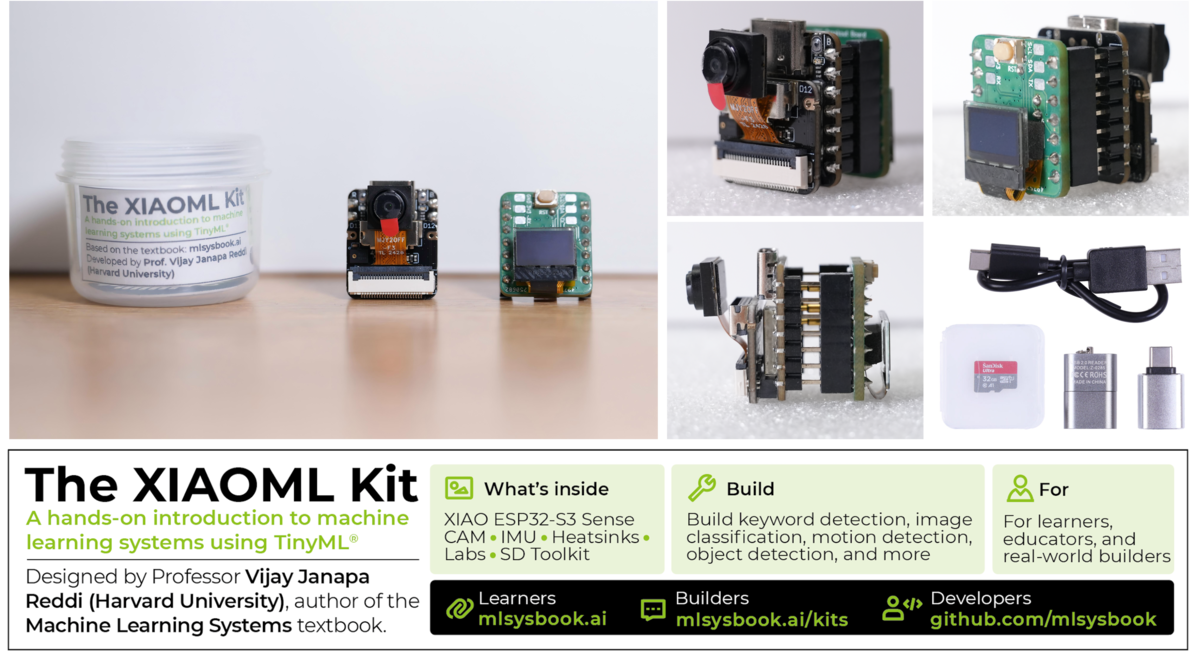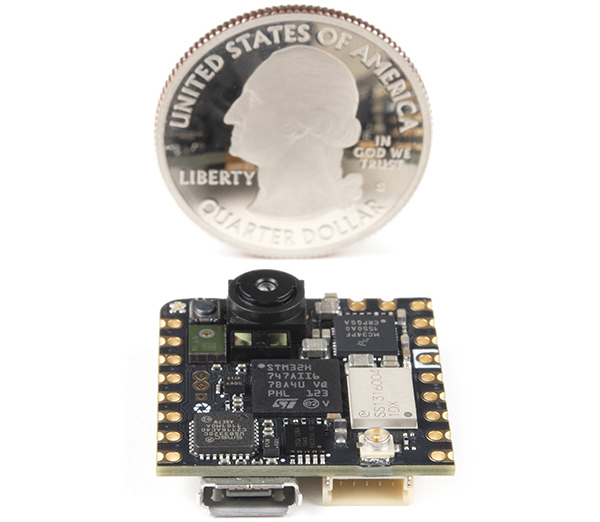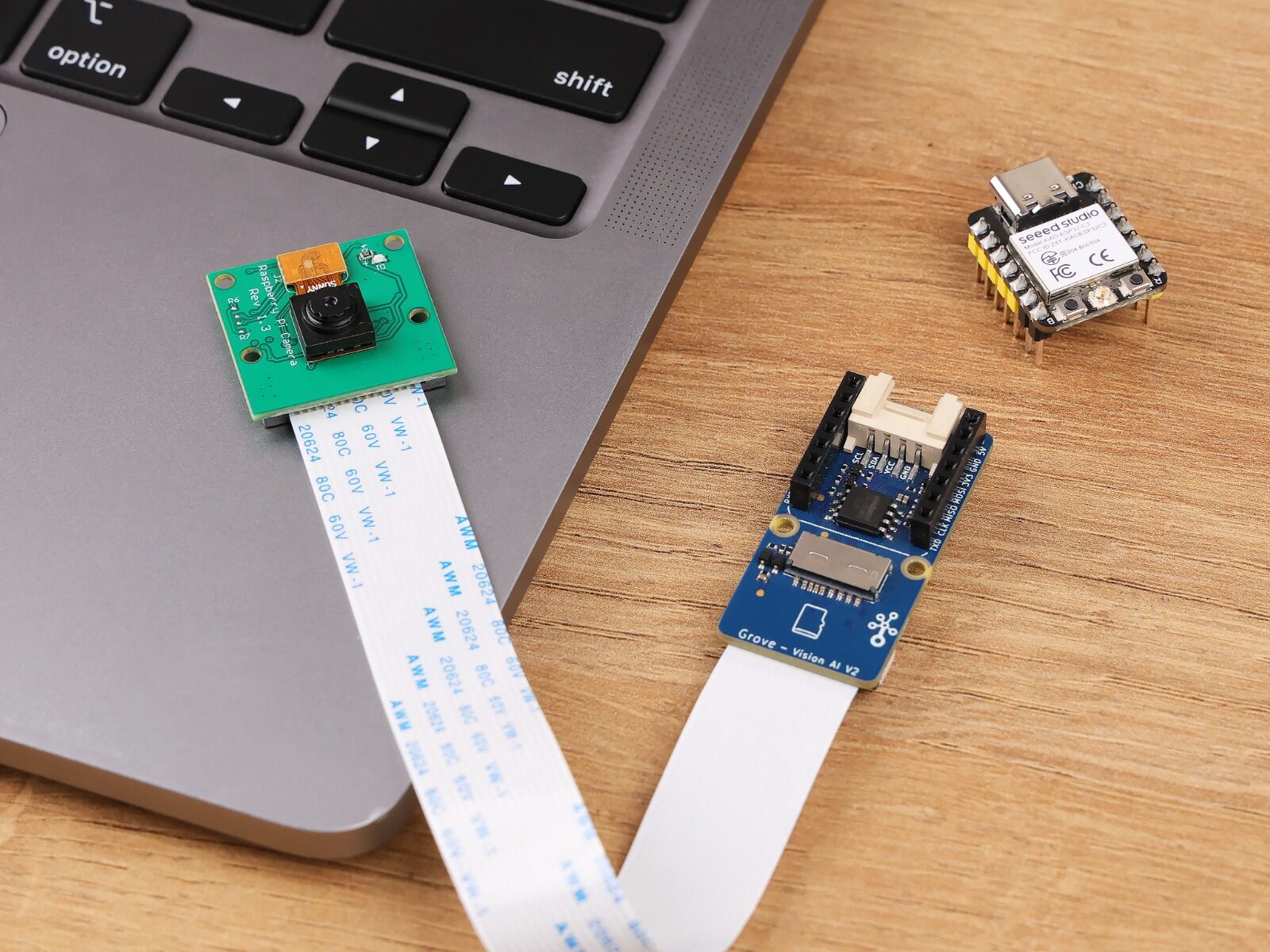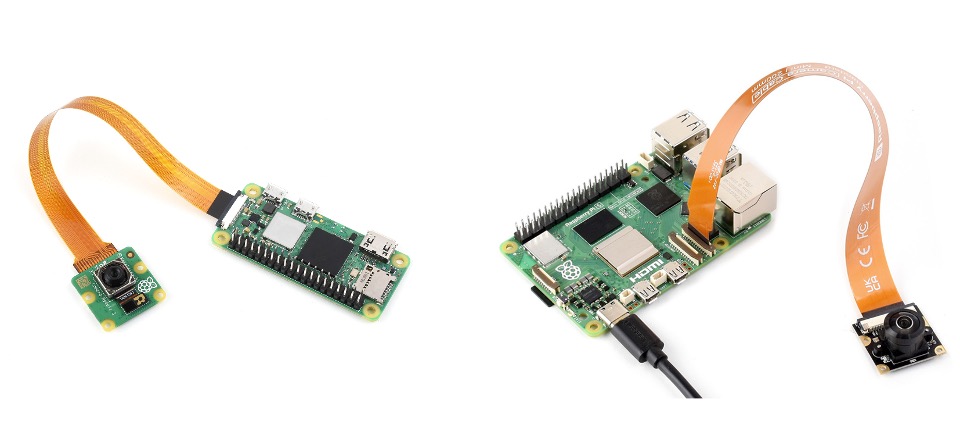Hardware Kits
This section introduces the four hardware platforms selected for the TinyML curriculum. Each platform represents a different point along the spectrum of embedded computing capabilities, from ultra-low-power microcontrollers to full-featured edge computers. These platforms illustrate distinct engineering trade-offs in power consumption, computational capability, and development complexity.
The selected platforms are widely used in commercial applications, thereby ensuring that the skills developed through these exercises translate directly to embedded systems development.
Our Featured Platform
The XIAOML Kit is the most recent addition to our educational hardware platforms (released on July 31st, 2025). It offers a comprehensive TinyML development environment for learning about ML systems, featuring integrated wireless connectivity, a camera, multiple sensors, and extensive documentation. This compact board exemplifies how contemporary embedded systems can efficiently provide advanced machine learning capabilities within a cost-effective framework.
System Requirements and Prerequisites
Before selecting a hardware platform, ensure your development environment meets the following requirements:
Development Computer Requirements:
- Operating System: Windows 10/11, macOS 10.15+, or Linux (Ubuntu 18.04+)
- Memory: 8GB RAM minimum (16GB recommended for Raspberry Pi development)
- Storage: 10GB free space for development tools and libraries
- USB Ports: At least one USB 2.0/3.0 port for device connection
- Internet Connection: Required for software installation and library downloads
Software Prerequisites:
- Arduino IDE 2.0+ for Arduino-based platforms
- Python 3.8+ for Raspberry Pi development
- Git for version control and example code access
- Text Editor/IDE (VS Code, PyCharm, or similar)
Hardware Accessories:
- USB-C or Micro-USB cables (data transfer capable, not power-only)
- SD Card (32GB+ Class 10) for Raspberry Pi
- Power adapters appropriate for each platform
- Camera modules (included with most kits or available separately)
Hardware Platform Overview
Our curriculum features four carefully selected platforms that span the full spectrum of embedded computing capabilities. Each platform shown in Table 1 has been chosen to illustrate specific engineering trade-offs and learning objectives.
| Platform | Primary Learning Focus | Cost | Power Profile | Best For |
|---|---|---|---|---|
| XIAOML Kit | IoT & Wireless ML | $15-50 | Low Power | Cost-sensitive deployments |
| Arduino Nicla | Ultra-low Power Design | $120 | Ultra-low | Battery-powered devices |
| Grove Vision AI | Hardware Acceleration | $30 | Medium | Industrial applications |
| Raspberry Pi | Full ML Frameworks | $60-150 | High | Advanced edge computing |
Platform Comparison
Table 2 provides a comprehensive technical comparison of all four platforms.
| Characteristic | XIAOML Kit | Raspberry Pi | Arduino Nicla | Grove Vision AI V2 |
|---|---|---|---|---|
| Cost Range (USD) | $15-50 | $60-150 | $120 | $30 |
| Power Consumption | Low | High | Ultra-low | Medium |
| Processing Power | Medium | Very High | Low | High (NPU) |
| Memory Capacity | 8MB | 1-16GB | 2MB | 16MB |
| Primary Use Case | IoT networks | Edge computing | Battery devices | Industrial AI |
| ML Framework | TF Lite | TensorFlow, PyTorch | TensorFlow Lite | SenseCraft AI |
| Development Env. | Arduino/ PlatformIO | Python/Linux | Arduino IDE | Visual/Code |
Platform Selection Guidelines
Selecting the appropriate platform depends on specific learning objectives and project requirements. Table 3 provides a systematic mapping to guide these decisions.
| Learning Objective/Application | XIAOML Kit | Ras Pi | Arduino Nicla | Grove Vision AI V2 |
|---|---|---|---|---|
| Embedded Systems Basics | ✓ | Limited | ✓ | ✓ |
| Wireless Connectivity | ✓ | ✓ | ✓ | |
| Ultra-Low Power Design | ✓ | |||
| Full ML Frameworks | ✓ | |||
| Hardware Acceleration | ✓ | |||
| Real-time Vision | Limited | ✓ | ✓ | ✓ |
| Edge-Cloud Integration | ✓ | ✓ | ✓ | |
| Production Deployment | ✓ | ✓ | ✓ |
Hardware Platform Specifications
This section provides detailed technical specifications for each platform, including processor architecture, memory hierarchy, sensor capabilities, and development toolchain requirements.
XIAOML Kit (Seeed Studio)
The XIAOML Kit excels at wireless connectivity and cost-sensitive deployments. It’s perfect for learning IoT sensor networks, remote monitoring systems, and wireless ML inference where you need reliable connectivity in a compact, affordable package.
The XIAO ESP32S3 represents the category of ultra-compact, wireless-enabled microcontrollers optimized for IoT applications. The name “XIAO” (小) translates to “tiny” in Chinese, reflecting the board’s 21×17.5mm form factor.
Processor Architecture: ESP32-S3 dual-core Xtensa LX7 running at 240MHz
Memory Hierarchy: 8MB PSRAM and 8MB Flash storage
Connectivity: WiFi 802.11 b/g/n and Bluetooth 5.0
Integrated Sensors: OV2640 camera sensor, digital microphone, 6-axis inertial measurement unit
Power Characteristics: 3.3V operation with multiple low-power modes
Development Environment: Arduino IDE and PlatformIO support with extensive library ecosystem. Supports C/C++ programming with Arduino-style abstractions and direct ESP-IDF for advanced users.
Application Focus: IoT sensor networks, remote monitoring systems, wireless ML inference, cost-sensitive deployments
Arduino Nicla Vision
The Arduino Nicla Vision is optimized for battery-powered devices and always-on sensing applications. It’s ideal for learning ultra-low power design, image classification systems, and object detection applications where battery life is measured in months, not hours.
The Nicla Vision exemplifies professional-grade embedded vision systems built around the STM32H7 microcontroller. This platform demonstrates how specialized hardware design enables sophisticated ML inference within severe resource constraints.
Processor Architecture: STM32H747 dual-core ARM Cortex-M7/M4 running at 480MHz
Memory Hierarchy: 2MB integrated RAM and 16MB Flash storage
Integrated Sensors: GC2145 camera sensor, MP34DT05 digital microphone, 6-axis IMU
Power Characteristics: 3.3V operation optimized for battery-powered deployment
Development Environment: Arduino IDE and OpenMV IDE support with specialized computer vision libraries. MicroPython support for rapid prototyping alongside C/C++ for production deployments.
Application Focus: Battery-powered devices, image classification systems, object detection applications, always-on sensing
Grove Vision AI V2
The Grove Vision AI V2 features dedicated neural processing hardware for orders-of-magnitude performance improvements. It’s perfect for learning industrial inspection systems, real-time video analytics, and advanced object detection where you need NPU-accelerated inference capabilities.
The Grove Vision AI V2 incorporates dedicated neural processing hardware (NPU) to demonstrate hardware-accelerated ML inference. This platform illustrates how specialized AI processors achieve orders-of-magnitude performance improvements over software-only implementations.
Processor Architecture: ARM Cortex-M55 with integrated Ethos-U55 NPU
Memory Hierarchy: 16MB external memory for model and data storage
Neural Processing Unit: Dedicated hardware accelerator for ML inference
Camera Interface: Standard CSI connector supporting various camera modules
Audio Input: Onboard digital microphone
Development Environment: SenseCraft AI visual programming platform for no-code development, with Arduino IDE support for custom applications. Supports both graphical programming and traditional C/C++ development workflows.
Application Focus: Industrial inspection systems, real-time video analytics, advanced object detection, NPU-accelerated inference
Raspberry Pi (Models 4/5 and Zero 2W)
The Raspberry Pi bridges embedded systems and traditional computing, providing a complete Linux environment for advanced ML applications. It’s ideal for learning edge AI gateways, advanced computer vision systems, language model deployment, and multi-modal AI applications where you need full computing capabilities.
The Raspberry Pi family bridges embedded systems and traditional computing, providing a full Linux environment while maintaining educational accessibility. This platform demonstrates how increased computational resources enable sophisticated ML applications.
Processor Architecture: ARM Cortex-A76 (Pi 5) or Cortex-A53 (Zero 2W)
Memory Hierarchy: 1-16GB DDR4 RAM depending on model
Storage: MicroSD card primary storage with USB 3.0 expansion
Connectivity: Gigabit Ethernet, WiFi, Bluetooth, multiple USB ports
Camera Interface: Dedicated CSI connector plus USB camera support
Operating System: Debian-based Raspberry Pi OS (full Linux distribution)
Development Environment: Full Linux development environment with native Python, C/C++, and JavaScript support. Package managers (apt, pip) provide access to extensive ML libraries including TensorFlow, PyTorch, and OpenCV.
Application Focus: Edge AI gateways, advanced computer vision systems, language model deployment, multi-modal AI applications
Getting Started
To get started with the hardware kits used in this course, you can purchase them directly from the following official sources:
- Seeed Studio – XIAOML Kit and Grove Vision AI V2 Module
- Arduino Store – Nicla Vision
- Raspberry Pi Foundation – Boards and Kits
- DigiKey, Mouser, SparkFun — Alternative distributors for a variety of components and kits
Check each site for educational discounts, bundles, and regional availability. Most kits are available as starter packages that include the board and basic accessories.



